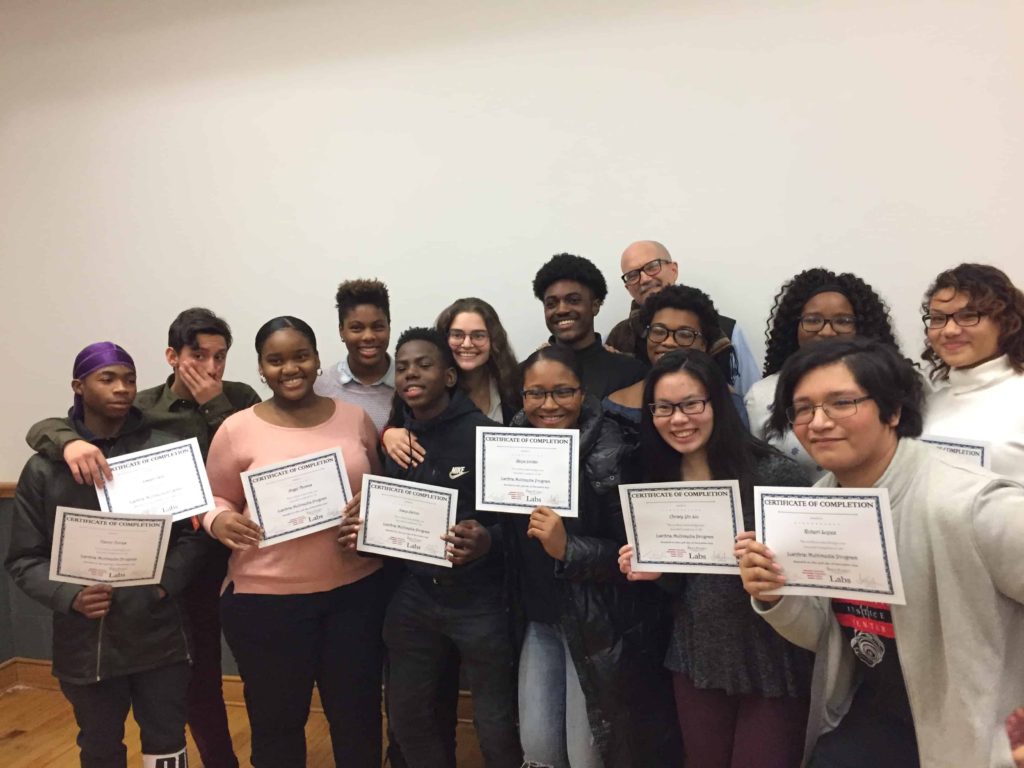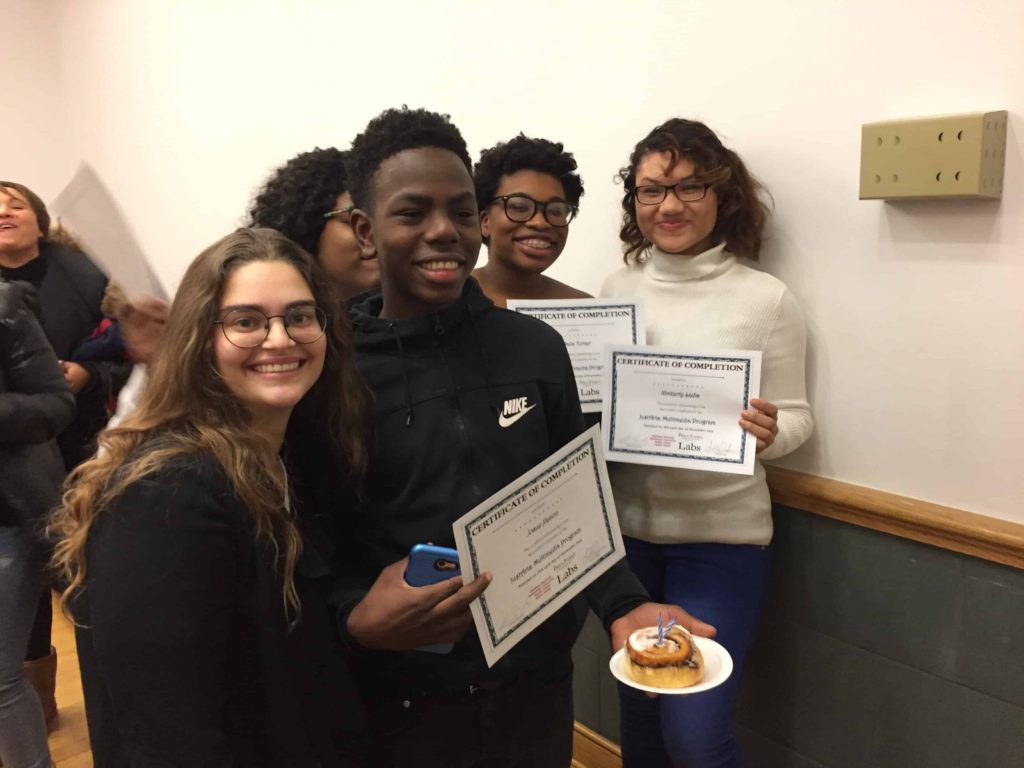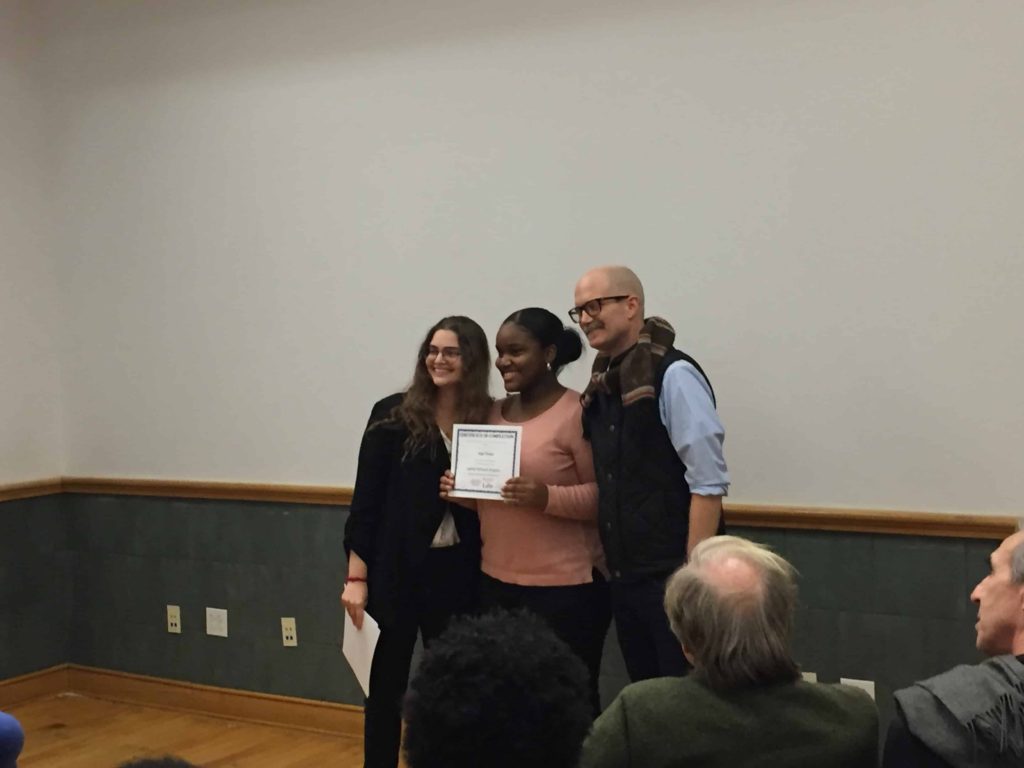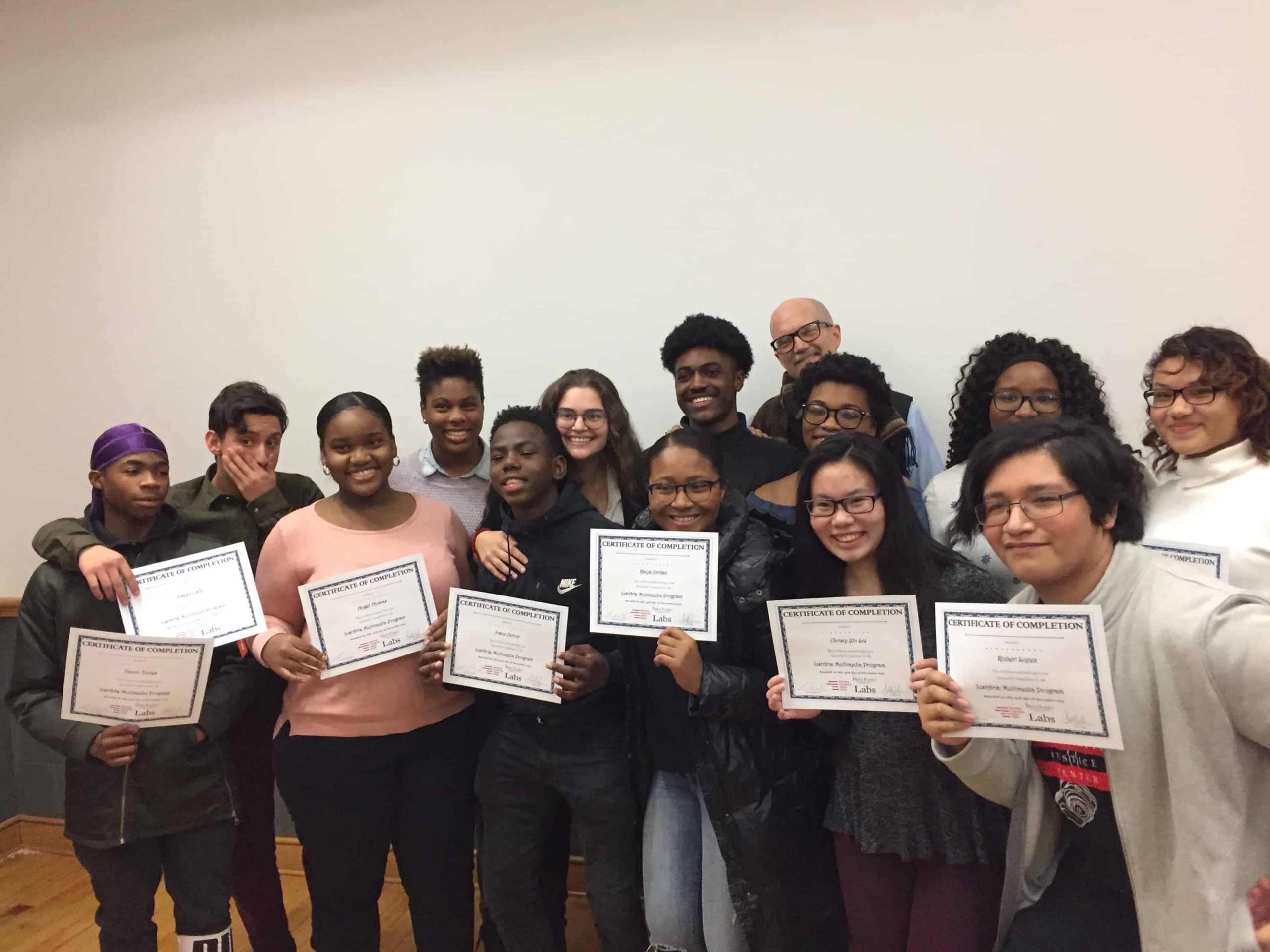
The JustArts Documentary class at the Red Hook Community Justice Center, which is supported by the Price Family Foundation and Red Hook Labs, finished their second semester teaching multimedia to teenagers back in December.
This well-known program that has students attend from all over Brooklyn is a competitive one to get into. On Thursday, December 14, there were 12 students who showed their two to four-minute personal videos for their class, friends and family.
During the class in the spring, they mainly focused on photography, but from September to December the instructors, Todd Drake and Lauren Henschel, had the kids focus on making videos about their lives and the world around them in Brooklyn.
This after school class met twice a week and would sometimes put in more time as it got closer to the end of the semester. The ages spanned from freshman through seniors in high school and a freshman at Hunter College.
The individuals who participated in this class included Kaiya Jordan, Christy Ying Liu, Josue Petion, Dalia Turner, Kimberly Leiba, Kimora Williams, Trevor Torres, Joseph Calle, Robert Lopez, Angel Thomas, Jalyn Barham and Malachi Parsons.
There were field trips organized by Henschel to Vice, Red Hook Labs as well as other places to enrich the experience for the people in the class. Henschel also organized all of the equipment and curriculum based on courses that she had in college as a documentary film student, and they had a visit from the Boston NPR affiliate.
Leiba very much enjoyed their visit to Vice and liked the chance she had to talk to people who work there.
“It was really cool,” Leiba said. “We saw how the working environment is there. Three or four people talked to us about their jobs and how they got to be where they are. They gave good advice and it was cool that we were able to network with them.
Henschel remarked that these kids made college level documentaries that she didn’t see from her classmates in college. According to the instructors, they told stories about their life and ones that really mattered to them.

Leiba, one of the young adults in the class, said that when introducing her video, she originally thought her life wasn’t interesting but then added that, “now I realize that my voice matters.” She realized that she has a lot of exciting things happening in her life through making this project.
Parsons made a video about his life, finding himself and the role that faith plays in his journey and the journey of people that he knows.
Lopez made his documentary video about his decision to pursue his passion for the culinary arts or to pursue his passion for photography and film making in his chaotic life.
Petion, who was in the middle of applying to colleges, made his video about his dual passions for basketball and photography and using them to balance the stresses in his life.
Barham made his video about racism of various forms that people encounter.
Jordan made her video on how technology distances us from each other. She interviewed her mother who talked about how different interactions used to be 15-20 years ago. Jordan had b-roll of how many people look at their phones in school, on the train and in various places in Brooklyn.
Another student made her video on how there is a need to create and destroy things that are around us.
Turner, who wants to pursue engineering in college and is a senior in high school, made her video on gentrification in Brooklyn as a result of a story her grandmother told her when she was choosing the topic for her video.
“I also have family members who were pushed out of their house because of gentrification,” Turner said. “I thought it would be something interesting to work on and see how it affects rest of the borough.”
Through working on this project, the Starrett City resident, has learned that gentrification is bigger than what people make of it.
“I feel like people think of it as making an area better, but it is actually pushing people out and making people uncomfortable.”
She started working on her video in the beginning of September and finished some editing and final additions on the day the video was shown. She helped her friends with their movies by helping them pick their music, edit their videos and assisting with filming their movies.
She goes to Digital Arts and Cinema Technology High on Baltic Street and she found out about the program through her teacher.
The goal of this program was to empower the participants to develop their personal voice as artists, teach participants to explore the power of visual imagery, prepare students to conduct video and audio interviews and introduce participants to industry professionals to learn what it means to pursue a career in the arts.
“The goal was to develop an authentic voice and to be able to tell their story,” Drake said. “I think we succeeded. We talked a lot about how to tell their story, how to be honest and it had to be their narrative and not ours.”
According to Drake, there was a competitive open call interview process for this course. He thought that there was about one individual selected for every 10 that applied.
About half of the class consisted of people who were enrolled in the spring and then the other half joined for the first time in September.
“Word has spread about the program because it was successful in the spring,” Drake said. “About half of the kids were in the program earlier. They had wanted to come back and then the other half was recruited.”
Drake was impressed that everyone stuck with it even after some got sick or had to be out of the state.
According to Henschel, in the spring the class was only photography, but this semester what the instructors asked of the students this time was about 10 times harder. Henschel designed this class similar to classes she had while a documentary student at Duke.
“Every single one of the students completed a piece from 2-4 minutes that they made by themselves,” Henschel said at the beginning of the program. “They recorded the audio, they conducted the interviews, they took the pictures, they took the videos and compiled it together to make something that made sense.”
“We have met the past two Saturdays, we met Monday nights and Wednesday nights,” Henschel added. “They have gone above and beyond to make this a reality.”
Henschel added that most of the people she went to college with were not able to create a finished four-minute piece that made sense like the kids in the class did.
Turner tried to help the Red Hook community during her current internship.
The Brooklyn Borough President’s Office did a Christmas giveaway and through her internship in Eric Adams’s office she tried to get them to be more involved in Red Hook since she now knows the community well through this program.










